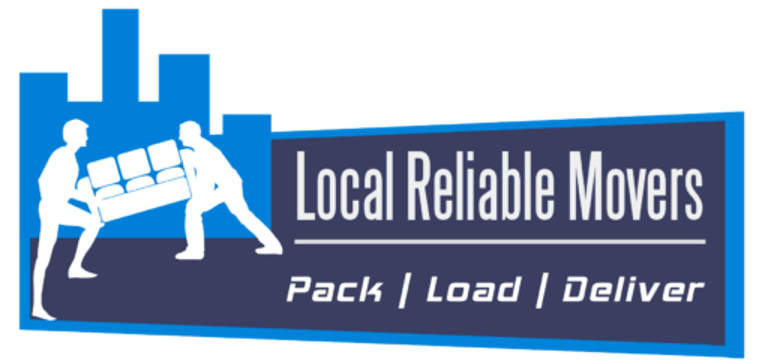TEXT 253.900.2989 FOR A FREE ESTIMATE! WE DO FREE IN-HOME ESTIMATES!
5 Major Changes Every Mover Should Expect
5 Major Changes Every Mover Should Expect
PREPARATION
5/14/20255 min read


The Transition of Packing Techniques
As the moving industry continues to evolve, one of the most noticeable changes is in packing techniques. With advancements in materials and technology, traditional packing methods are being redefined to enhance both efficiency and sustainability. Movers today can expect to encounter a variety of innovative packing solutions that not only protect items during transit but also reduce environmental impact.
One of the key trends is the adoption of eco-friendly packing materials. Companies are increasingly using biodegradable packing peanuts, recycled cardboard boxes, and paper wraps instead of plastic bubble wrap. These materials not only offer adequate protection for delicate items but also contribute to a reduction in landfill waste. The shift towards a greener approach in packing resonates well with clients who prioritize sustainability in their moving processes.
Furthermore, the introduction of lightweight materials is revolutionizing the way individuals pack their belongings. Items such as foam pads and custom-fit containers provide superior protection without the added weight, allowing for a more efficient packing process. Specialized packing supplies—such as double-walled boxes for fragile items or adjustable cushioning materials—are becoming more commonplace. These innovations enable movers to pack efficiently while ensuring that items remain secure during transit.
For individuals seeking to optimize their packing process, it is essential to consider a few practical tips. First, categorize items based on fragility and weight, ensuring that heavier items are placed at the bottom of boxes. Additionally, utilizing labeled boxes can streamline the unpacking process once the move is complete. Investing in quality packing supplies will also pay off by minimizing potential damage to cherished possessions during the moving journey.
In this era of change, understanding the latest packing innovations and techniques is vital for a successful moving experience, ultimately ensuring that all items arrive at their new destination in excellent condition.
Shifts in Logistics and Transportation
The moving industry is undergoing significant transformation due to advancements in logistics and transportation technologies. One of the most impactful changes is the widespread adoption of GPS tracking systems. These innovative tools enable movers to monitor the real-time location of their vehicles, enhancing the ability to manage routes effectively. This level of oversight not only improves operational efficiency but also ensures that customers receive timely updates about their belongings, which is crucial for maintaining satisfaction during the moving process.
In addition to GPS tracking, the implementation of automated routing software is revolutionizing how movers plan their journeys. By leveraging sophisticated algorithms, these systems can analyze traffic patterns, road conditions, and other variables to determine the most efficient routes. This minimizes delays and enhances the overall effectiveness of the moving process. As a result, movers can significantly reduce costs associated with fuel consumption and labor, contributing to a more sustainable business model.
Real-time updates are another pivotal aspect of logistics changes within the moving industry. With improved communication technology, movers can provide clients with up-to-the-minute information about their shipments. This transparency not only boosts customer confidence but also allows for proactive problem-solving should any unexpected issues arise during transit. As movers strive to meet rising customer expectations, the integration of these advanced logistics systems becomes imperative.
When planning routes and schedules, movers should prioritize key factors such as peak traffic hours and weather conditions, leveraging technology to create comprehensive plans that minimize delays. The synergy between these technological advancements and strategic planning is essential for achieving optimal outcomes in moving operations. As these shifts continue to reshape the industry, moving companies that embrace these changes will likely see enhanced performance and customer loyalty.
Increased Focus on Sustainable Practices
The moving industry is witnessing a significant transformation, driven by a growing emphasis on sustainability. As environmental concerns rise globally, movers are increasingly prioritizing eco-friendly practices as an integral part of their operations. This shift has substantial implications for both moving companies and their clients. Eco-friendly options are becoming not just a trend, but a necessity for modern movers.
One of the most prominent changes is the adoption of reusable packing materials. Instead of relying on single-use cardboard boxes and plastic wraps, many moving companies are now offering reusable crates, which reduce waste and promote a circular economy. This allows movers to minimize their environmental footprint while ensuring the safe transport of belongings. Additionally, utilizing biodegradable packing materials will further support sustainable practices, appealing to a more ecologically conscious clientele.
Energy-efficient moving vehicles are another area where substantial advancements are occurring. Many moving firms are investing in electric or hybrid trucks, which decrease fossil fuel consumption and lower greenhouse gas emissions. Transitioning to renewable energy sources not only mitigates environmental impact but also positions moving companies as leaders in sustainability. Clients tend to favor businesses that prioritize green practices, creating a competitive edge in the marketplace.
Carbon offset programs are also gaining popularity, allowing moving companies to compensate for their emissions. By investing in reforestation projects or clean energy initiatives, moving businesses can provide their customers with the option to offset the carbon footprint of their move. This not only enhances clientele trust but also reinforces a company's commitment to environmental stewardship.
Overall, embracing sustainable practices in the moving industry is not just beneficial for the environment; it can also yield significant advantages for businesses, fostering consumer loyalty and enhancing brand reputation. As the industry evolves, movers should be prepared to adopt innovative practices that reflect a dedication to sustainability.
Enhanced Customer Communication and Support
In today's rapidly evolving moving industry, enhanced customer communication and support has become essential for providing exemplary service. Movers are increasingly leveraging modern technology to foster more effective communication with clients. With the introduction of mobile applications, customers can now access real-time information regarding their move, track their belongings, and communicate directly with their moving team. This immediacy not only alleviates stress but also empowers clients to stay informed throughout the moving process.
Online chat support is another innovative tool being adopted by movers to improve customer experience. This feature allows customers to engage in live conversations with customer service representatives, enabling quick responses to inquiries or concerns. Such instant communication is particularly vital during the moving period, where timely information and reassurances can significantly enhance customer confidence in the services provided. Additionally, automated notifications and updates via email or mobile apps keep customers informed of important milestones such as scheduling changes or delivery timelines.
The impact of transparent communication cannot be overstated, particularly during a time when individuals experience high levels of stress associated with moving. By providing clear and consistent updates, movers can build trust with their clients, demonstrating commitment to customer satisfaction. Best practices for engaging clients include setting clear expectations, promptly addressing concerns, and fostering an environment of open dialogue throughout the relocation process. Understanding that moving is one of the most stressful life events, it is vital for movers to prioritize active engagement and offer robust support systems.
As technology continues to advance, movers must adapt to utilize these communication tools effectively, ensuring that customer satisfaction remains a central focus. Tailoring communication strategies to meet the evolving needs of clients can ultimately enhance the overall moving experience, positioning movers as reliable partners in a significant life transition.
Services
Expert moving solutions for your local needs.
contact us
Info@LocalMovers.io
253-900-2989
© 2025. Local Reliable Movers, LLC. All rights reserved.
